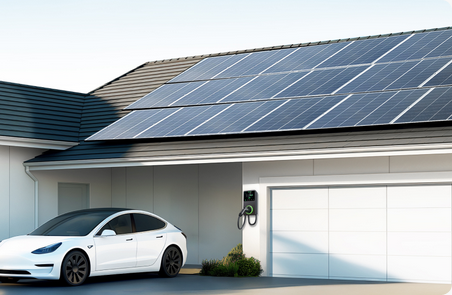
As our lives become increasingly dependent on electricity, the importance of reliable, portable power has never been greater. Whether you're preparing for emergencies, planning an off-grid adventure, or simply looking for a cleaner alternative to gas generators, battery generator—also known as portable power stations—have emerged as a smart and sustainable solution.
In this ultimate guide, we'll break down everything you need to know about battery generators: how they work, what to look for, and how to choose the right one for your needs.
What Is a Battery Generator?
A battery generator is a portable power source that stores electrical energy in rechargeable batteries. Unlike traditional gas-powered generators, battery generators don’t require fuel, emit zero fumes, and operate silently. They are commonly used for:
Emergency backup power during outages
Camping and RV trips
Powering tools and devices on job sites
Charging electronics on the go
Key Components
Battery generators typically consist of:
Lithium-ion or LiFePO4 batteries: These store and supply energy.
Inverter: Converts DC power (battery output) to AC power (standard outlets).
Charge controller: Regulates input from solar panels or other charging sources.
Input ports: Allow charging via solar, wall outlet, or car adapter.
Output ports: AC outlets, USB ports, and sometimes 12V car sockets.
Advantages of Battery Generators
Clean Energy: No emissions or fumes, making them ideal for indoor or environmentally sensitive areas.
Silent Operation: Perfect for nighttime use, especially during power outages or while camping.
Low Maintenance: No oil changes, no fuel storage—just plug in and go.
Renewable Charging Options: Many models support solar charging, allowing for sustainable, off-grid use.
Portability: Compact and lightweight models make it easy to carry power wherever you need it.
What to Consider When Choosing One
When shopping for a battery generator, consider the following factors:
1. Power Capacity (Watt-hours or Wh)
This determines how much energy the unit can store. The higher the watt-hour rating, the more devices it can power or the longer it will last.
Small devices (phones, cameras): 150–300Wh
Laptops, CPAP machines: 300–700Wh
Mini fridges, TVs: 1,000–2,000Wh
Power tools, home backup: 2,000+ Wh
2. Output Power (Watts)
This refers to how much power the generator can provide at once. Check both the continuous and peak/surge ratings.
Look for at least 300W continuous for small appliances.
1,000W+ is needed for larger devices like microwaves or hair dryers.
3. Port Selection
Make sure the unit has enough ports for your devices:
AC outlets for standard plugs
USB-A/USB-C for phones, tablets
12V DC ports for car accessories
4. Recharge Time and Options
Some units charge faster than others. Look for:
Wall outlet recharge speed
Solar panel compatibility and input capacity
Car charging support
5. Battery Chemistry
Lithium-ion (Li-ion): Lightweight, compact, and affordable.
LiFePO4 (Lithium Iron Phosphate): Longer lifespan, safer, and more durable—ideal for frequent use.
Popular Use Cases
Emergency Preparedness: Keep the lights, fridge, and communication devices running during a blackout.
Camping & Van Life: Power your cooler, lights, fans, and more—without disturbing nature.
Worksites: Charge power tools or laptops in remote areas without access to electricity.
Outdoor Events: Run music systems, projectors, and lights for hours on end.
Maintenance Tips
Store in a cool, dry place.
Recharge every 3–6 months if not in use.
Keep firmware updated if supported by the manufacturer.
Use a surge protector when charging sensitive electronics.
Final Thoughts
Battery generators are revolutionizing the way we think about portable and backup power. They’re quiet, eco-friendly, and increasingly powerful—making them a must-have for adventurers, homeowners, and professionals alike.
Whether you're preparing for the next power outage or planning your next weekend in the wild, investing in the right battery generator ensures you’ll always have power when and where you need it.

















Write a comment ...